British anti-tank artillery in World War II
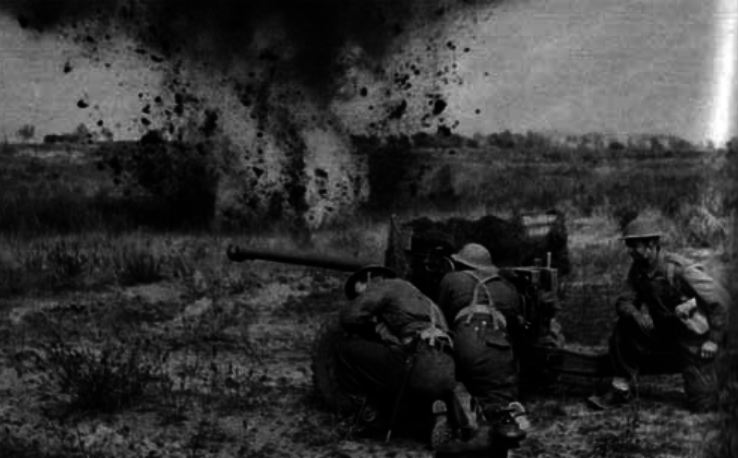
By the beginning of hostilities in Europe, the main weapon of British anti-tank units was the 2-pound 40-mm anti-tank gun.
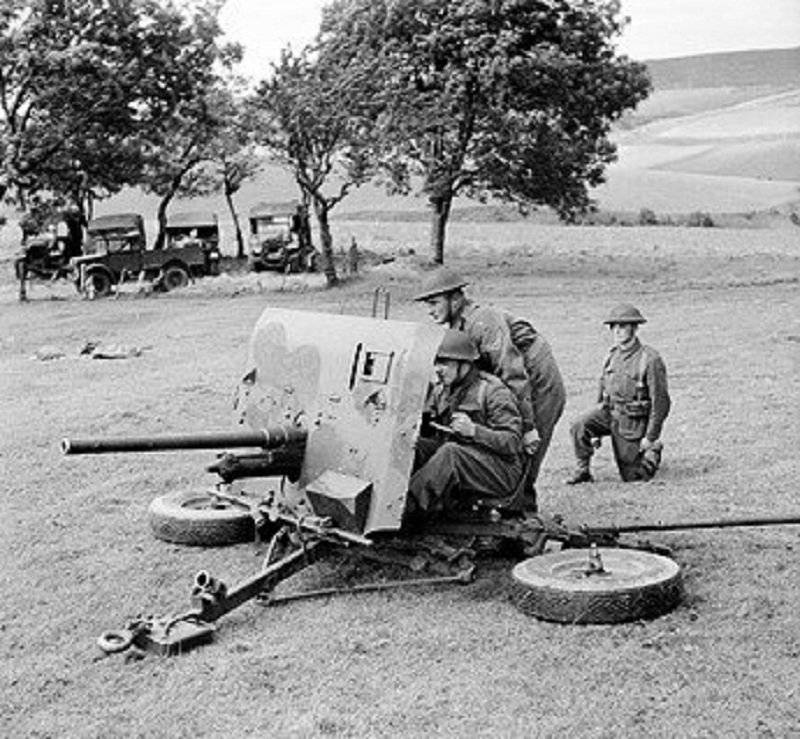
The prototype 2-pound cannon QF 2 pounder was developed by Vikers-Armstrong in the 1934 year. By design, it was a perfect tool for its time. In combat, the two-pounder rested on a low base in the form of a tripod, thereby providing a horizontal angle of 360 °, and the wheels broke off from the ground and were fixed on the side of the gun barrel. After the transition to a combat position, the gun could easily turn to any point, allowing firing at moving armored vehicles in any direction. A strong grip with a cruciform base increased the shooting efficiency, since the gun did not “walk” after each shot, retaining its tip. The accuracy of the fire was very high also due to the presence of a telescopic sight. The calculation was defended by a high armor shield, on the back of which a box with shells was attached.
At the time of the appearance, the “two-pounder” was perhaps the best weapon in its class, surpassing the 37-mm German anti-tank gun 3,7 cm Pak 35 / 36 in a number of parameters. At the same time, in comparison with many guns of that time, the design of the 2-pound cannon was rather complicated, moreover, it was much heavier than other anti-tank guns, the weight of the gun in the combat position was equal to 814 kg. The gun's rate of fire reached 22 rds / min.
Conceptually, the gun differed from that used in most European armies. There the anti-tank guns were to accompany the advancing infantry, and the 2-pound guns were intended for firing from a fixed defensive position.
In 1937, this weapon was adopted by the Belgian, and in 1938, by the British army. According to the British classification, the gun belonged to the rapid-fire (hence the letters QF in the title - Quick Firing). It took some time during the revision of the first samples to fully comply with army standards, in 1939, the gun version of the Mk3 was finally approved for the gun.
For the first time, the anti-tank "two-pounder" was used by the Belgian army in an attempt to counter the German invasion of the Netherlands and Belgium and subsequently by the British army during the French campaign.
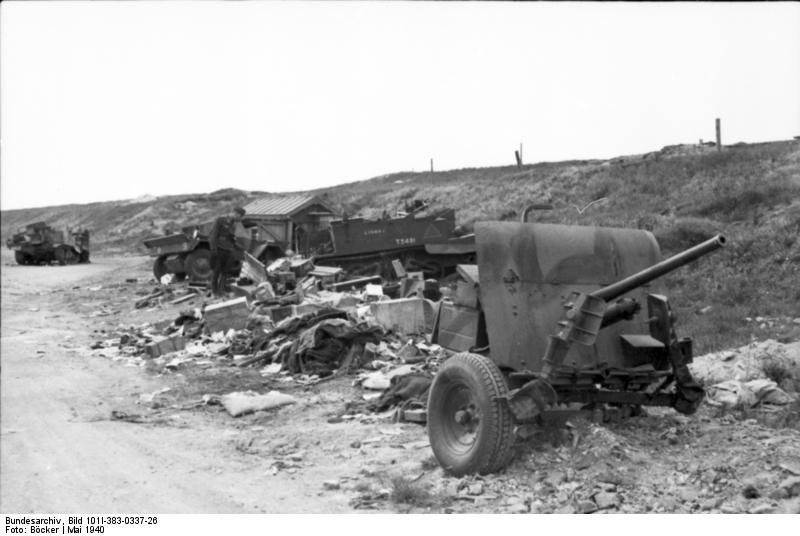
A significant number of "two-pounders" (more than 500 units) were abandoned by the British army in France during the evacuation from Dunkirk. The two-pound cannons captured in Dunkirk were used by the Germans (including on the Eastern Front) under the designation 4,0 cm Pak 192 (e).
The events of 1940 showed that the 2-pound gun was out of date. 40 mm anti-tank guns did not have enough power to penetrate 50 mm German armor tanks. Their shells were too light to cause significant damage to the tank’s mechanisms, even if armor was pierced.
An 1,08-kg armor-piercing projectile that left the gun at a speed of 850 m / s (enhanced charge), at a distance of 457 m penetrated 50-mm homogeneous armor. The reinforced-charge armor-piercing projectiles were introduced when it became clear that standard projectiles with an initial speed of 790 m / s, which had armor penetration on 457 meters 43 mm, were not effective enough.
For some reason, two-pound ammunition as a rule did not include fragmentation shells that could allow these guns to hit unarmored targets (despite the fact that such shells were fired in the UK for the needs of anti-aircraft artillery and fleet).
To enhance the armor penetration of 40-mm anti-tank guns, a Lipgljohn transitional device was designed, worn on the barrel and allowing you to shoot sabot projectiles with a special “skirt”. The sabber 0,57-kg armor-piercing Mk II projectile in combination with the Lippleon extension adapter accelerated to 1143 m / s. However, the light sub-caliber projectile was relatively effective only at “suicidal” close distances.
Until 1942, British manufacturing capacity was not enough for the production of modern anti-tank guns. Therefore, the release of 2-pounders QF 2 pounder continued, despite their hopeless obsolescence.
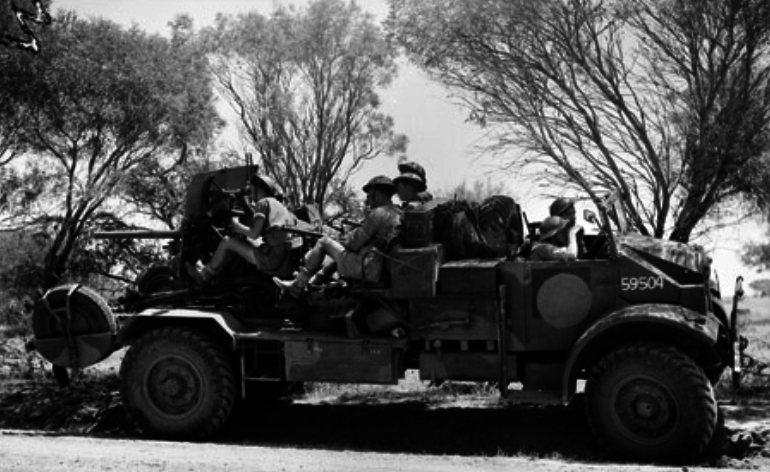
As a result, in the North African campaign 1941-1942, 2-pound cannons proved to be insufficiently effective against German tanks. In this campaign, the British began to mount them on all-terrain trucks to increase the mobility of the two-pounders. Of course, such an improvised PT SAU was very vulnerable on the battlefield.
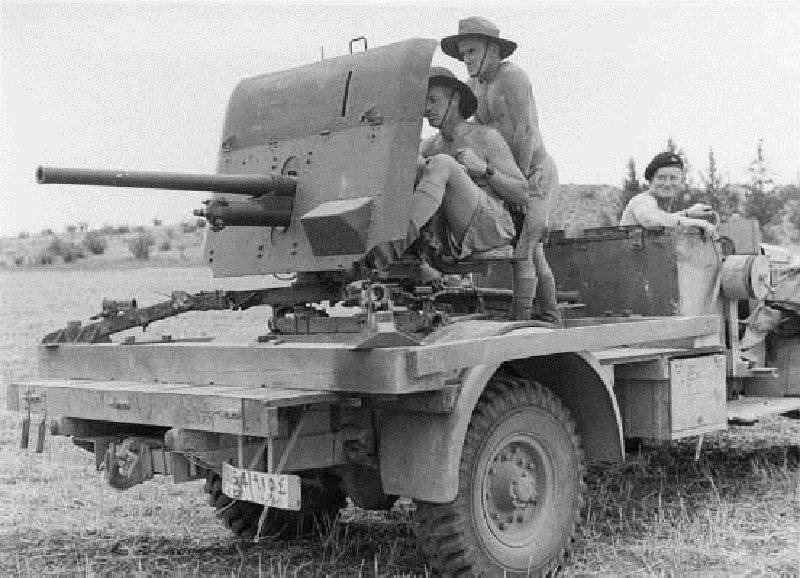
On the chassis of all-wheel drive Morris trucks were also installed 40-mm anti-aircraft guns "Bofors", the license issue of which was established in the UK.
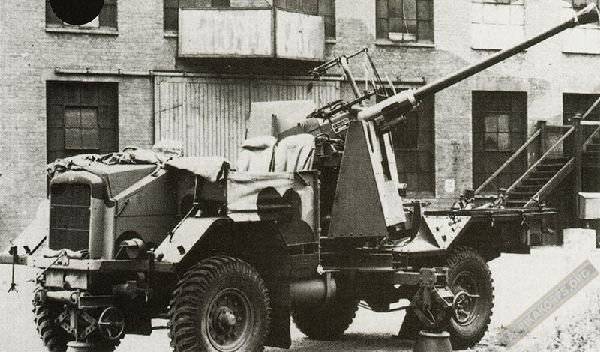
During the fighting in North Africa, in addition to its direct destination, the British 40-mm ZSU provided fire support to the infantry and fought with German armored vehicles. In this role, they were much better than two-pounders. However, not surprisingly, the anti-aircraft gun had a longer barrel, the automatic weapon was several times superior to the anti-tank in speed of fire, and the presence in the ammunition set of fragmentation shells allowed the enemy infantry to be kept outside the effective range of the machine-gun fire.
The two-pound gun was used on British and Canadian tanks (including those supplied to the USSR during the Great Patriotic War under the Lend-Lease program). But due to the apparent weakness of the gun as a tank, it was not used for long. Unlike tanks on armored cars, the “two-pounder” was used throughout the war.
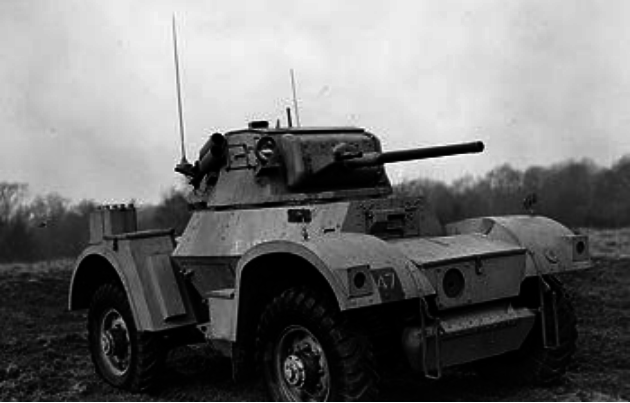
After 1942, the 2-pound cannons were removed from anti-tank artillery units and transferred to infantry to protect against tanks in melee combat. These guns were used quite successfully in the Far East against weakly armored Japanese tanks, remaining in service until the end of hostilities.
In addition to the 40-mm "two-pounders", at the beginning of the war there was a certain amount of X-NUMX-mm anti-tank cannons "Bofors" in the British anti-tank artillery units.
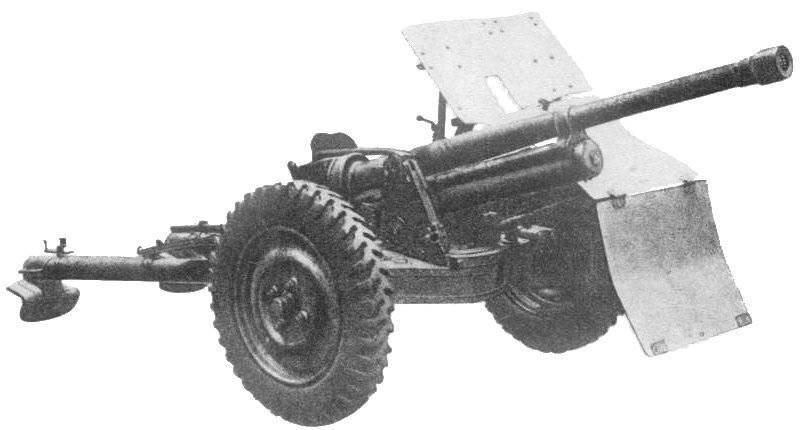
In 1938, 250 guns were ordered in Sweden, of which no more than 100 was delivered before the start of the war. In Britain, the gun had the designation Ordnance QF 37 mm Mk I.
The design of the gun was perfect enough for its time. The monoblock barrel, equipped with a semi-automatic horizontal wedge bolt and a small muzzle brake, was mounted on a carriage with sliding beds. The gun had a suspension and metal wheels with rubber tires. The calculation was defended by a bent shield shield 5 mm thick, and its lower part could be hinged back. It was one of the best anti-tank guns of the late 30-s, which was popular in different countries.
37-mm "Bofors" on the characteristics of armor penetration almost did not concede 40-mm "two-pounder". Combat rate reached 20 rds / min. At the same time, the weapon weighed only 380 kg, i.e. more than half the size of the QF 2 2-pound cannon. Low weight and good mobility made 37-mm Swedish guns popular among British gunners. However, after the appearance of tanks with anti-missile armor, both guns became obsolete.
Even before the outbreak of hostilities in 1938, realizing the weakness of 40-mm anti-tank guns, the British military initiated the development of a new 57-mm anti-tank gun. Work on the new anti-tank gun was completed in the 1941 year, but due to the lack of production capacity, its mass flow into the troops was delayed. Deliveries began only in May 1942, the gun was given the name Ordnance QF 6-pounder 7 cwt (or simply “six-pound”).
The design of the 6-pound gun was much simpler than that of the 2-pound. The forked bed provided an angle of horizontal pickup 90 °. There were two models in the 6-pounder gun series: the Mk II and the Mk IV (the latter had a slightly longer barrel than the 50 caliber, unlike the 43 caliber of the Mk II). The design of the frame model Mk III was adapted for placement in the landing gliders. The weight of the gun in the combat position of the modification of the Mk II was 1140 kg.
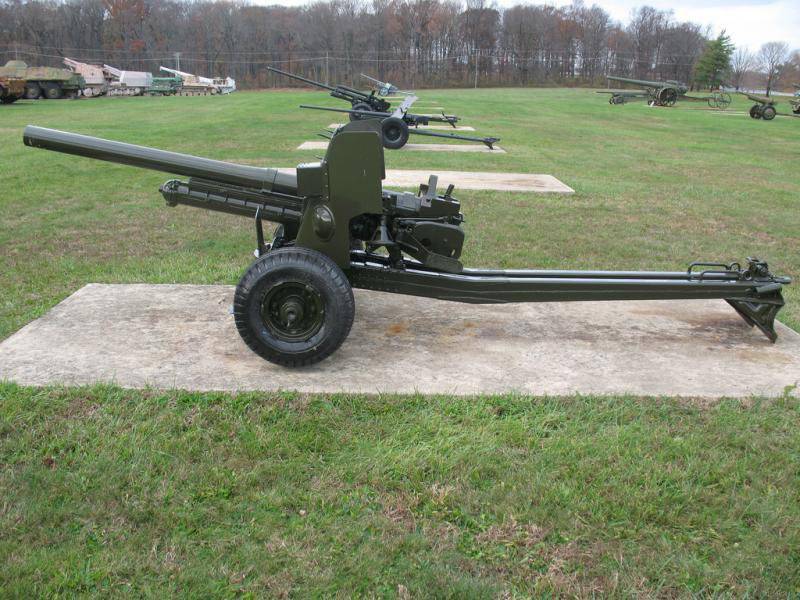
At that time, the "six-pounder" easily dealt with any enemy tanks. An armor-piercing 57-mm projectile weighing 2,85 kg at a distance of 500 m confidently punched 76-mm armor at an angle 60 °.
But next year the Germans had heavy tanks Pz.Kpfw.VI "Tiger" and PzKpfw V "Panther". Whose frontal armor turned out to be too tough for 57-mm guns. Already after its adoption, the power of the “six-pounder” was enhanced by the introduction of improved types of armor-piercing ammunition (this significantly extended the service life of the weapon). The first of these was an armor-piercing sabot projectile with a metal-ceramic core. In 1944, he was followed by an armored-piercing piercing projectile with a separating tray, which sharply increased the penetration capacity of the weapon. There was also a high-explosive fragmentation projectile for hitting unarmored targets.
For the first time 6-pound cannons were used in North Africa, where they received a rather high rating. The 57-mm guns successfully combined good armor penetration, low silhouette and relatively low weight. On the battlefield, she could roll the forces of the gun, and as a tractor on solid ground could use army jeeps. From the end of 1943, the guns began to be gradually removed from the artillery units and transferred to the infantry anti-tank calculations.
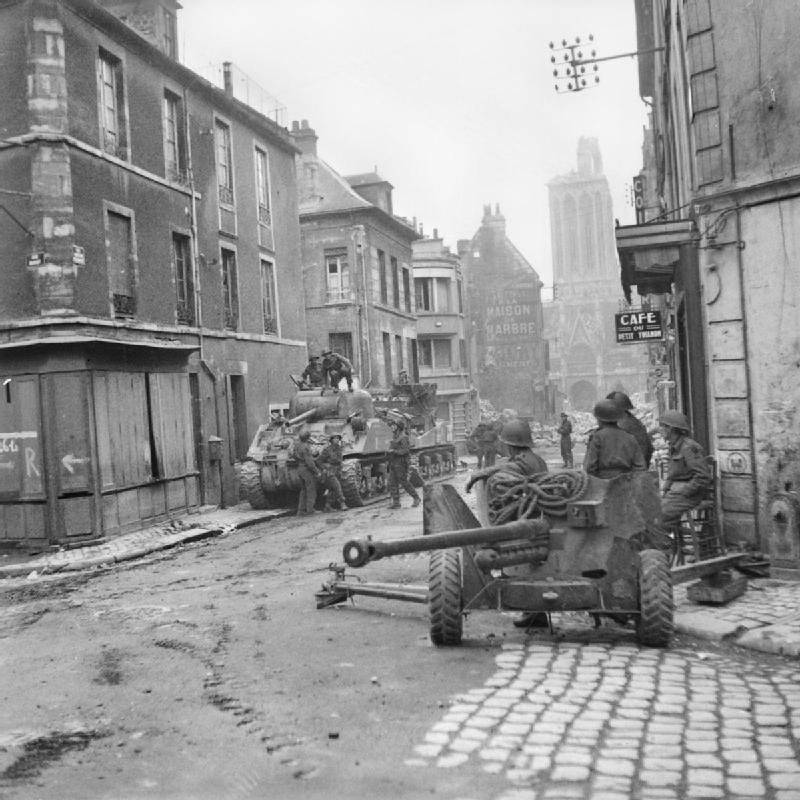
In total, more than 1942 1945-pounders were produced from 15000 to 6, 400 guns were supplied to the USSR. Comparing this anti-tank gun with the Soviet 57-mm gun ZiS-2, it can be noted that the British gun was significantly inferior in terms of the most important indicator - armor penetration. It was harder and harder, had almost twice the worst utilization of metal in production.
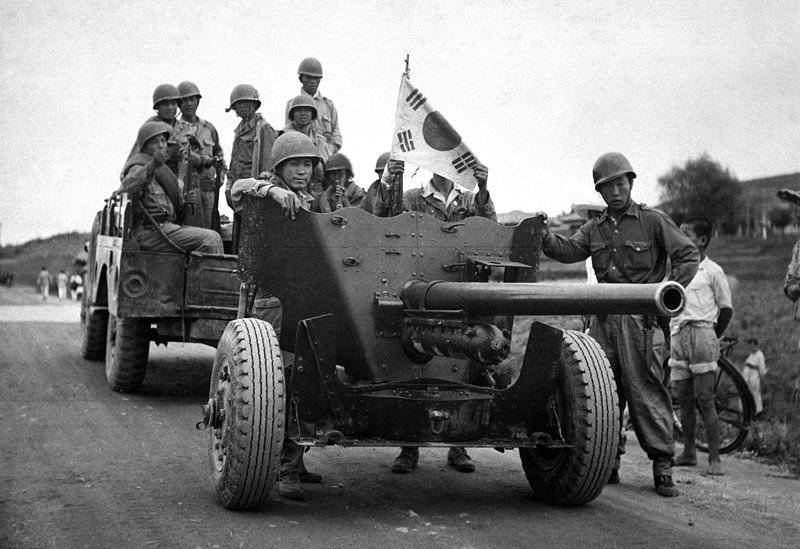
After the war, the 6-pound cannon remained in service with the British army until the end of the 50-x. Widely supplied to the Allies and participated in many local conflicts.
Obvious during the war, the tendency to strengthen armor protection of tanks led British military analysts to realize that the armor of new tanks 6-pound guns would not be able to cope soon. It was decided to start the development of the next generation of anti-tank guns caliber 3 inch (76,2 mm), firing projectiles weighing at least 17 pounds (7,65 kg).
The first samples of the 17-pound cannon were ready in August 1942, but the launch of the guns in the series took a long time. In particular, difficulties arose with the production of a carriage. However, the need for a powerful new anti-tank gun was very acute, British intelligence became aware of the German intention to transfer heavy tanks Pz.Kpfw.VI Tiger to North Africa. In order to give the troops at least some heavy weapon to fight them, 100 guns were flown to North Africa by transport aircraft. There they were urgently installed on beds from field 25-pounder howitzers, forming a hybrid 17 / 25-pound cannon. This gun system became known as the 17 / 25-pounder, or Pheasant.
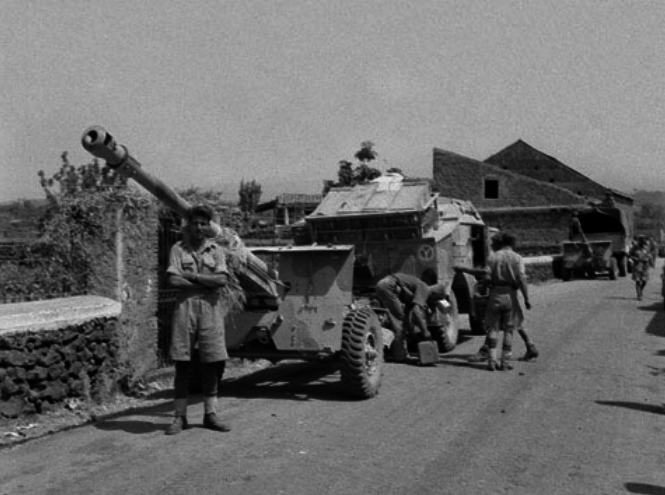
The gun was cumbersome enough for its caliber, but it successfully coped with the task. For firing were used armor-piercing shells with a ballistic tip, which had an initial speed of 884 m / s. At a distance of 450 meters, the gun pierced 148-mm armor at the meeting angle 90 °. Well-prepared calculations could produce at least 10 shells per minute. These “surrogate” guns continued service until 1943, until 17-pound cannons appeared that were called Ordnance QF 17-pounder. Arrived 17-pound guns had a low silhouette and were easy to maintain.
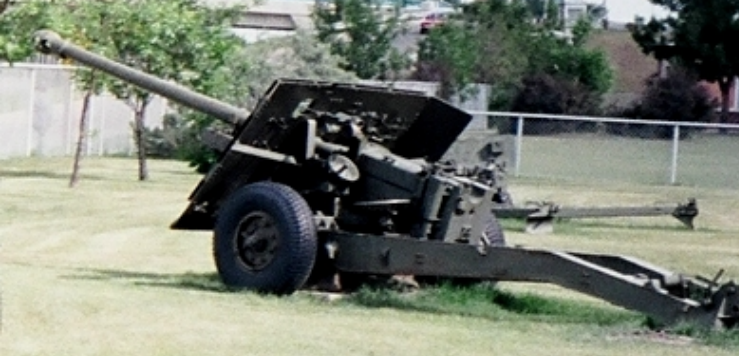
The bed was forked, with long legs and a double armored shield. Long barrel guns supplied with a muzzle brake. The calculation consisted of 7 people. The combat weight of the gun reached 3000 kg. Since August, 1944, the ammunition of guns began to be included, however, in limited quantities, new sabot shells SVDS or APDS. The mass of such a projectile was 3,588 kg, the mass of a tungsten core - 2,495 kg. The shell left the barrel at a speed of 1200 m / s and from the distance 500 m punched 190-mm armor plate, located at a right angle. The initial version of the high-explosive fragmentation projectile, used in the "seventeen-pound", was unsuccessful. Due to the powerful propellant charge in the sleeve, it was necessary to increase the thickness of the projectile walls, in order to avoid its destruction from loads when moving in the barrel when fired. As a result, the coefficient of filling the projectile with an explosive was also small. Subsequently, the reduction of the propellant charge in a unitary shot with a high-explosive fragmentation projectile made it possible to make the walls of the projectile thinner and place more explosives in it.
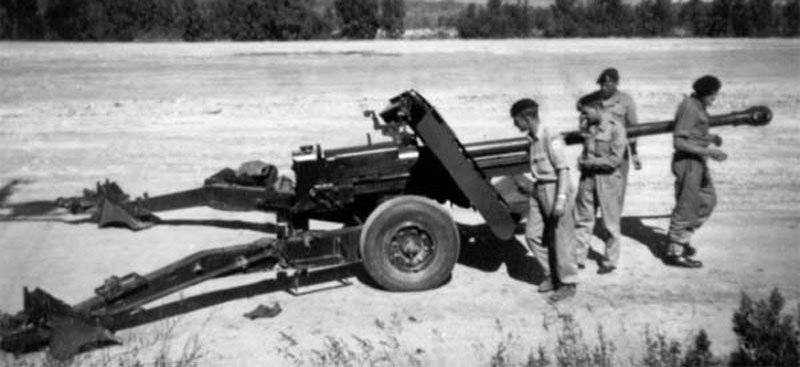
As you know, disadvantages - the continuation of the merits. The 17-pound cannon was a much heavier and larger tool than its 6-pound predecessor. She demanded a special tractor for her transportation and could not roll over the forces on the battlefield. For towing on "weak" ground was used artillery tractor on the basis of the tank "Kruseyder".
By 1945, the 17-pound gun became standard weapons parts of the royal artillery and anti-tank batteries, where he continued to serve until the 50-s, a lot of guns were transferred to the allied armies.
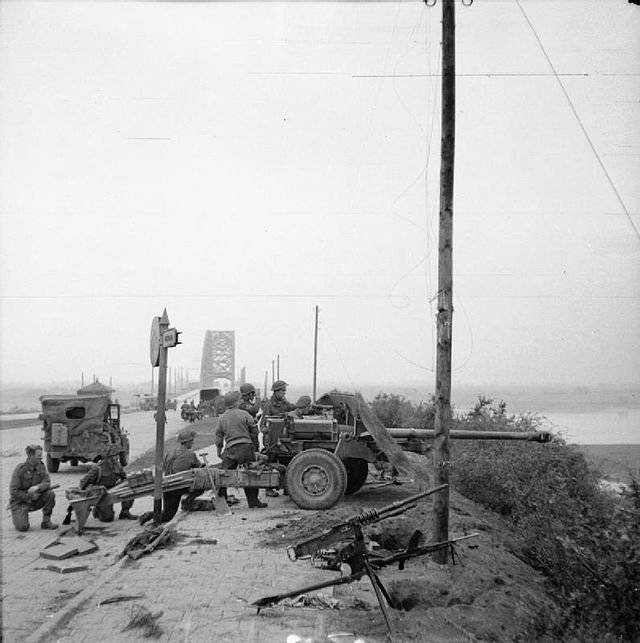
"Seventeen pound" was a very successful weapon for armament PT SAU and tanks. Initially, the gun was installed on the launched in a small series of cruiser fighter tanks "Challenger" A30. This tank was built on the elongated chassis of the Cromwell tank in 1942 and, being armed with the most powerful at the time British anti-tank gun QF 17 pounder, was intended for fire support and combat armored vehicles at long distances.
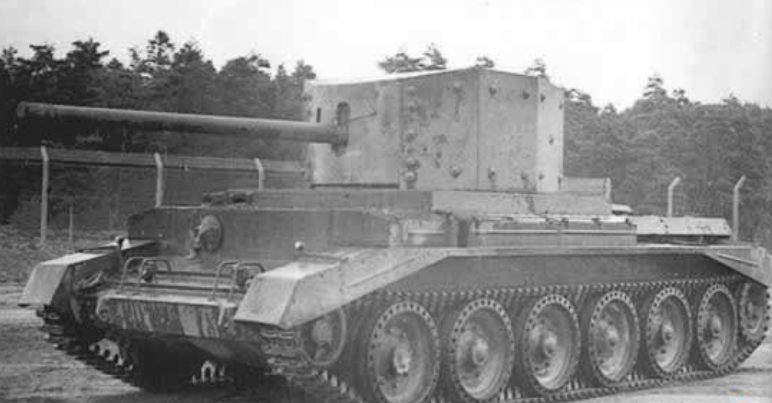
On the chassis of the tank "Valentine" in 1943 year released PT SAU "Archer" (eng. Archer - Archer). Designers "Vikkers" installed 17-pounder gun barrel in the stern. The top-mounted armor house with an inclined installation of the frontal sheets was lined up around the habitable volume of the vehicle, and the long-barreled gun was sent back. The result was a very successful compact tank destroyer with a low silhouette.
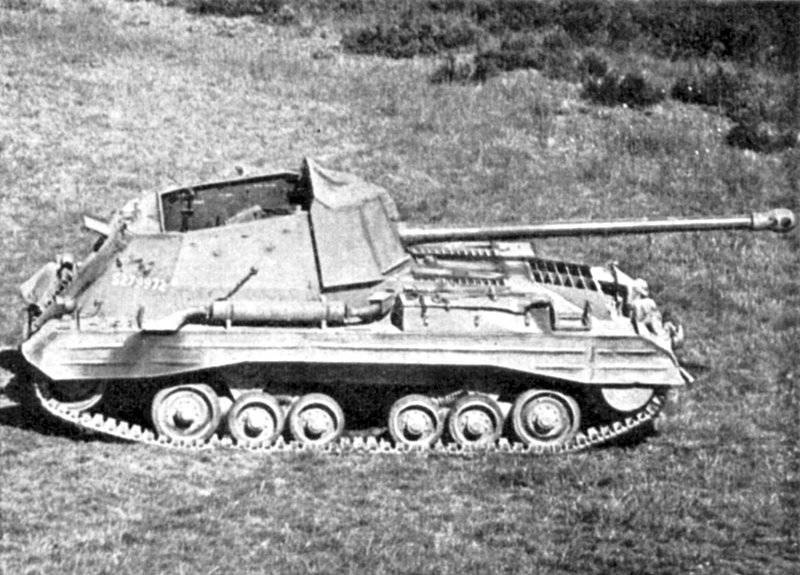
The "looking back" gun was not a disadvantage, as the Archer usually fired from a prepared position, which he could immediately leave if necessary.
But the most well-known machine, where this weapon was used, became the tank SXMNXX Sherman Firefly (eng. Firefly - "Firefly"). The 4-pounder gun was mounted on British Sherman tanks, models М17А4 and М1А4.
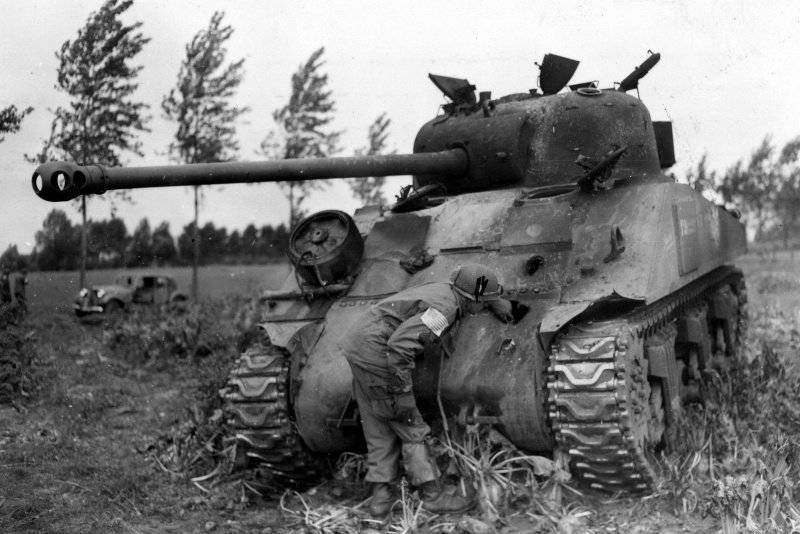
When re-equipping the tank, the gun and mask were replaced, the radio was taken out into an external box mounted on the back of the tower, the driver’s assistant was replaced (part of the ammunition was placed in its place) and a machine gun. In addition, due to the large length of the relatively thin barrel, the marching fixation system of the cannon was changing, the Sherman Firefly tower in the stowed position was unfolded 180 degrees, and the barrel of the cannon was mounted on a bracket mounted on the roof of the engine compartment. In total, 699 tanks were reworked, which entered the British, Polish, Canadian, Australian and New Zealand units.
At the end of the war, a powerful 76,2-mm anti-tank cannon with anti-aircraft gun 17-Inch QF AA was developed to replace the 94-mm QF 3.7 pounder. But given the fact that the new weapon turned out to be very heavy and expensive, and the war was nearing completion, the 120-mm recoilless BAT tool (L1 BAT) was preferred.
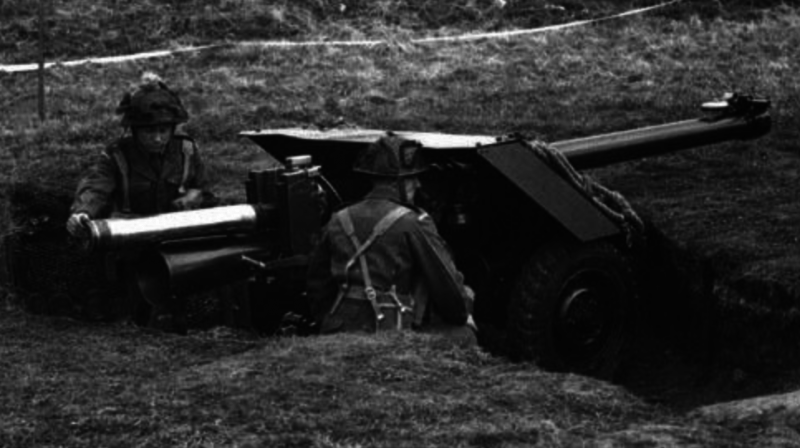
Launched into production after the end of the war, the “bezotkatka” resembled a conventional artillery gun with a lightweight wheel carriage with a large shield cover, and had a rifled barrel with a bolt, the nozzle was screwed into its rear end. A tray is attached to the top of the nozzle for easy loading. At the muzzle of the trunk there is a special device for towing the gun by car or tracked tractor.
Shooting from BAT was carried out with unitary loading shots with armor-piercing high-explosive tracer shells equipped with plastic explosives with 250-300 armor penetration mm. The length of the shot is about 1 m, the weight of the projectile is 12,84 kg, the effective firing range for armored targets is 1000 m.
Unlike the Germans, the British practically did not use medium-caliber anti-aircraft guns to fight tanks, despite the fact that their powerful 94-mm 3.7-Inch QF AA gun could destroy any German tank.
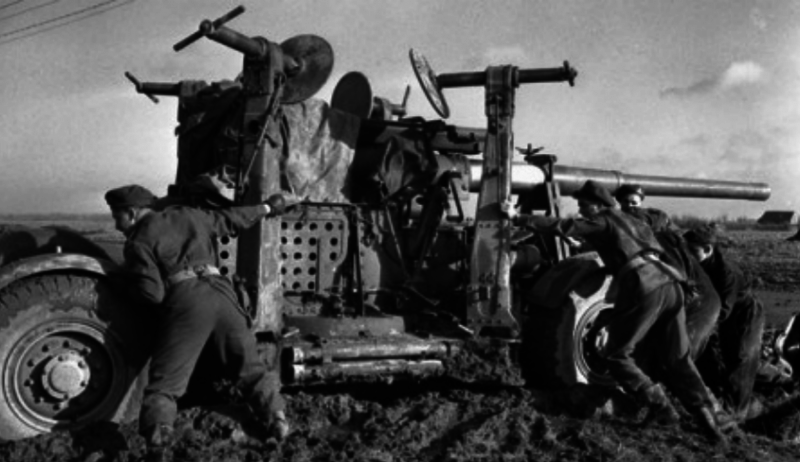
Apparently, the reason was the excessive weight of the gun and the considerable time required for deployment and relocation.
The production volumes of anti-tank guns in the UK were several times less than in the USSR or Germany. British anti-tank guns played a prominent role during the campaign in North Africa. In Europe, they were on the “pickup”, the main burden of the struggle in the ground units with relatively few “Panzervaffe” forces were carried by more mobile PTs SAU and tanks. Anti-tank guns, as a rule, were attached to infantry units, where they, apart from firing at armored vehicles, provided fire support in the offensive.
Very often, an Ordnance QF 25 pounder 25-pound howitzer fired at the tanks. This lightweight 87,6-mm howitzer is rightfully one of the best guns of World War II due to its high rate of fire, good mobility and excellent striking qualities of its projectiles. Given that these guns were more numerous than the 6-pound and 17-pound cannons, and the howitzer weighed half as much as the "seventeen pound", there were more chances for these guns on the battlefield.
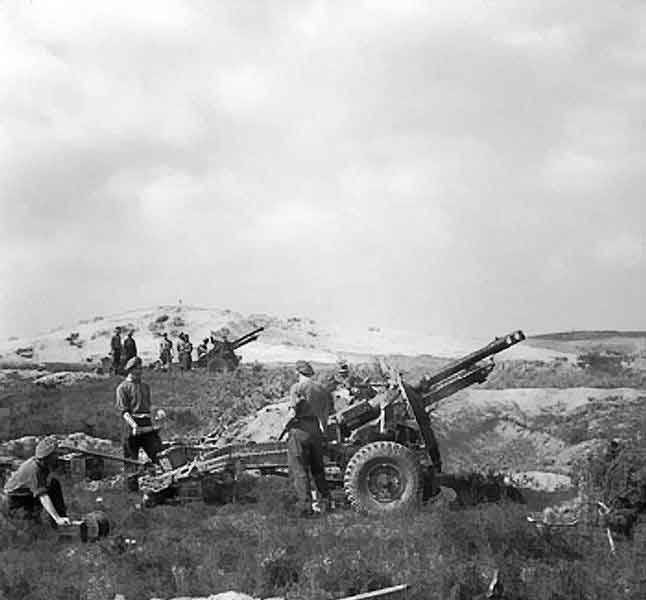
The gun was equipped with a periscope sight to combat armored vehicles and other targets when firing direct fire. The ammunition guns included 20-pound (9,1 kg) armor-piercing shells with an initial speed of 530 m / s. The rate of fire in direct fire was 8 shots / min.
The main means of fighting German tanks after the Allied landings in Normandy became aviation. Having suffered serious losses in the oncoming battles with German tanks: PzKpfw IV, Pz.Kpfw.VI Tiger and PzKpfw V Panther and self-propelled guns based on them, the British made the following conclusions: the primary task was to destroy the fighter-bomber squadrons - to destroy German tanks.
British pilots of Typhoon fighter-bombers used 60-pound 152-mm armor-piercing high-explosive missiles to fight armored vehicles. The warhead weighing 27,3 kg had an armor-piercing tip of hardened steel and was able to penetrate armor up to 200 mm in thickness at a distance of 1 km.
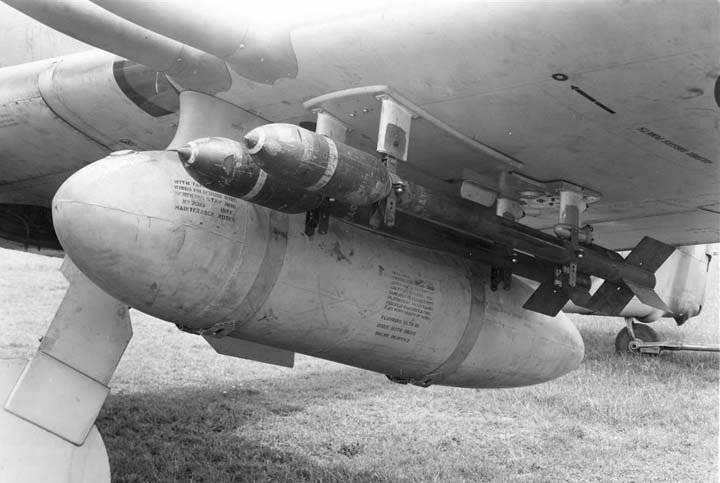
The 60lb SAP No60 Mk.I 2-pound rocket hit the front armor of a heavy tank, if it did not destroy it, it caused heavy damage and incapacitated the crew. It is assumed that the cause of the death of the most productive tank ace of the 3-th Reich Michael Wittman together with his crew was getting into the aft part of his "Tiger" 60-pound rocket from the Typhoon.
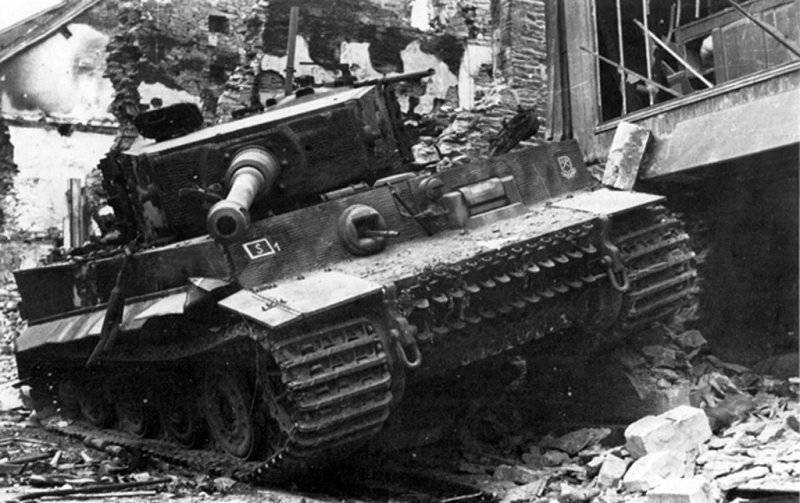
In fairness it should be said that we must be critical of the statements of British pilots about the hundreds of destroyed "Tigers". Much more effective were the actions of fighter-bombers on the German transport communications. Possessing dominance in the air, the Allies were able to paralyze the supply of fuel and ammunition, thus minimizing the combat capability of the German tank units.
Based on:
http://www.militaryfactory.com
http://jaegerplatoon.net
http://lesffi.vraiforum.com
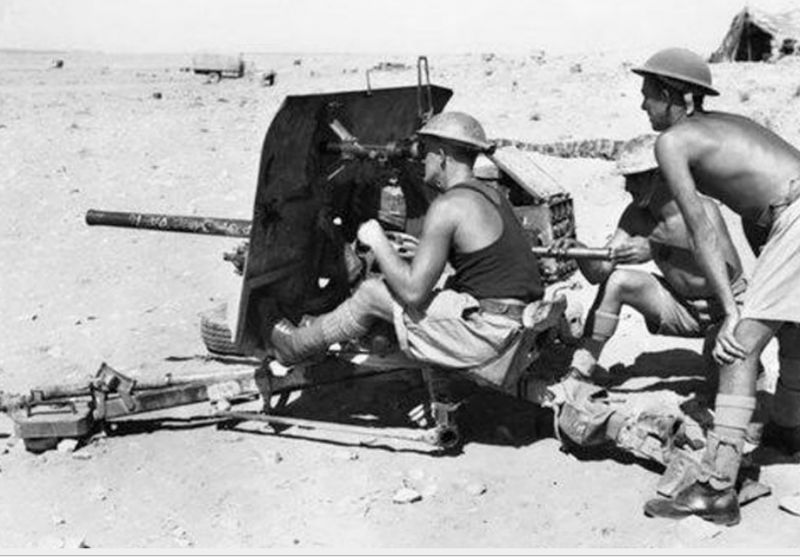
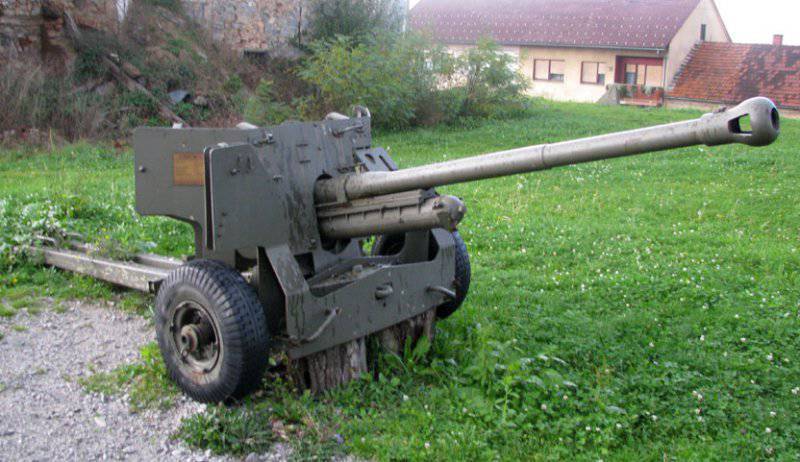
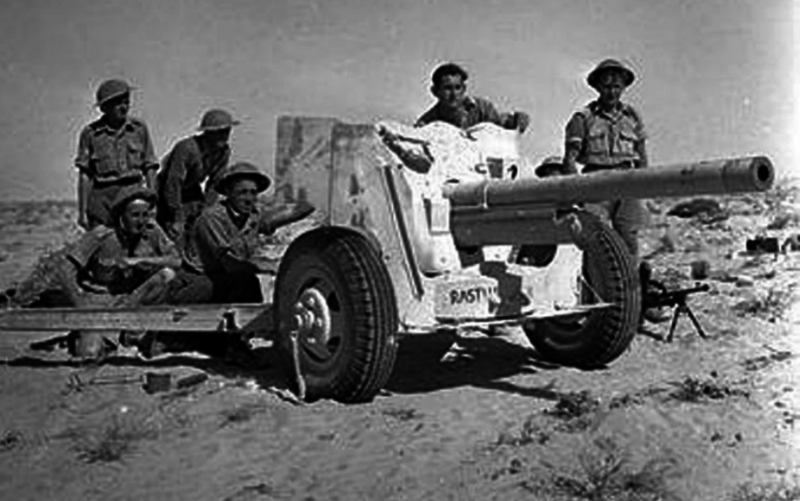
Information